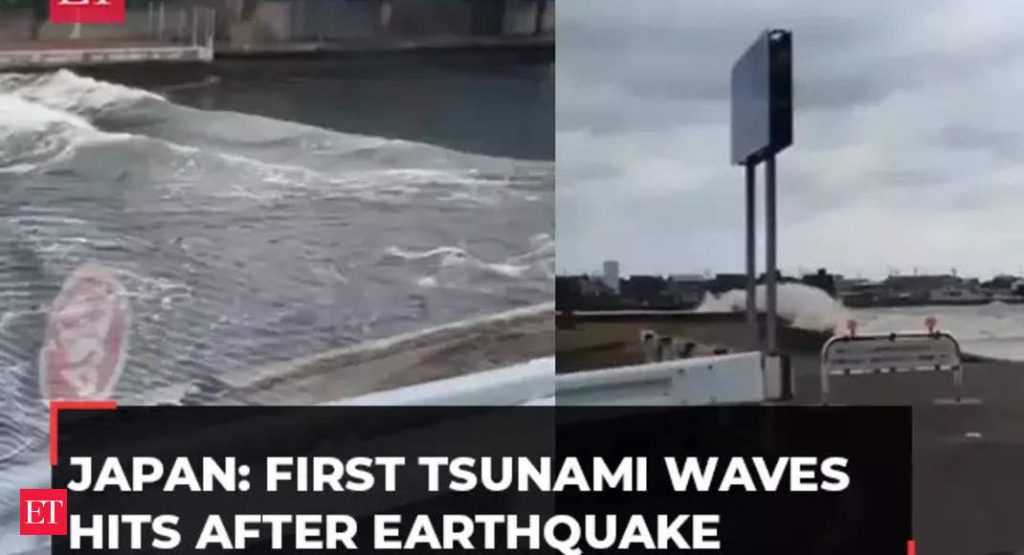January 2, 2024
Understanding Tsunamis: Causes and Impact
Japan Faces Tsunami Threats Again
- A recent earthquake in Japan has once again triggered a tsunami warning, underscoring the ongoing threat faced by the island nation. The occurrence of a tsunami, a term originating from the Japanese word for “harbor wave,” is primarily associated with seismic activities such as earthquakes or volcanic eruptions beneath the ocean.
Tsunami: Nature’s Unpredictable Fury
- Tsunamis manifest as a sequence of colossal ocean waves, instigated by sudden shifts in the ocean floor during seismic events. When seismic activity occurs underwater, significant movement of the ocean floor displaces vast quantities of water, generating these formidable waves. Similarly, volcanic eruptions in the ocean can also displace water, culminating in the formation of towering waves.
- According to NASA, the genesis of immense tsunamis typically transpires in the ocean’s depths. As these waves approach the shoreline, they surge in height due to the shallowing of the water, sometimes towering hundreds of feet. Their velocity can match that of jet planes over deep waters but decelerates upon reaching shallower areas.
- However, not all seismic events precipitate tsunamis. Several variables, including the ocean floor’s topography and the characteristics of the earthquake, determine the likelihood of a tsunami.
Japan’s Vulnerability to Earthquakes and Tsunamis
- Japan’s geographical positioning along the ‘Pacific Ring of Fire’ contributes significantly to its susceptibility to earthquakes and tsunamis. This ring delineates a horseshoe-shaped zone bordering the Pacific Ocean, notorious for frequent seismic and volcanic activities, as outlined by Live Science.
- Within this geological hotspot, diverse tectonic plates—such as the Pacific, Eurasian, and Indo-Australian Plates—constantly collide and interact, instigating earthquakes, volcanic eruptions, and subsequent tsunami threats.
- Recalling the catastrophic 2011 incident, a 9.0 magnitude earthquake and the ensuing tsunami wreaked havoc on Japan’s northeastern coastal regions, claiming nearly 18,000 lives and displacing tens of thousands. The resultant tsunami triggered a nuclear crisis at the Fukushima power plant, marking one of the most severe nuclear disasters since the Chernobyl incident in 1986.
- The recurrent occurrence of such calamitous events underscores the perpetual threat posed by seismic activities and the ongoing necessity for vigilant preparedness and precautionary measures in Japan.
Conclusion
- Japan’s geographical location within the Pacific Ring of Fire makes it inherently susceptible to seismic upheavals, perpetuating the persistent threat of earthquakes and tsunamis. The recent earthquake-induced tsunami serves as a stark reminder of the nation’s vulnerability, emphasizing the imperative need for sustained readiness and proactive disaster management strategies.
Gist of daily Article /The Hindu 17oct 2025
October 17, 2025
Daily Gist of the Hindu/Indian Express : 16 Oct 2025
October 16, 2025
Daily Gist of The Hindu/Indian Express: 6 Oct 2025
October 6, 2025
Daily Gist of Article /The Hindu /Indian Express: 24 Sep 2025
September 24, 2025

